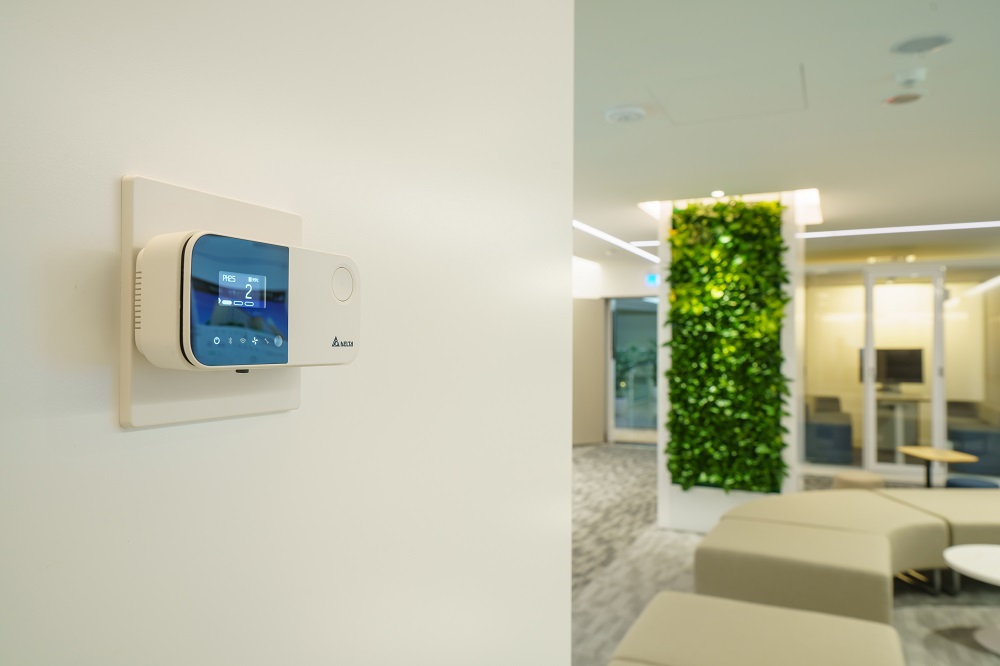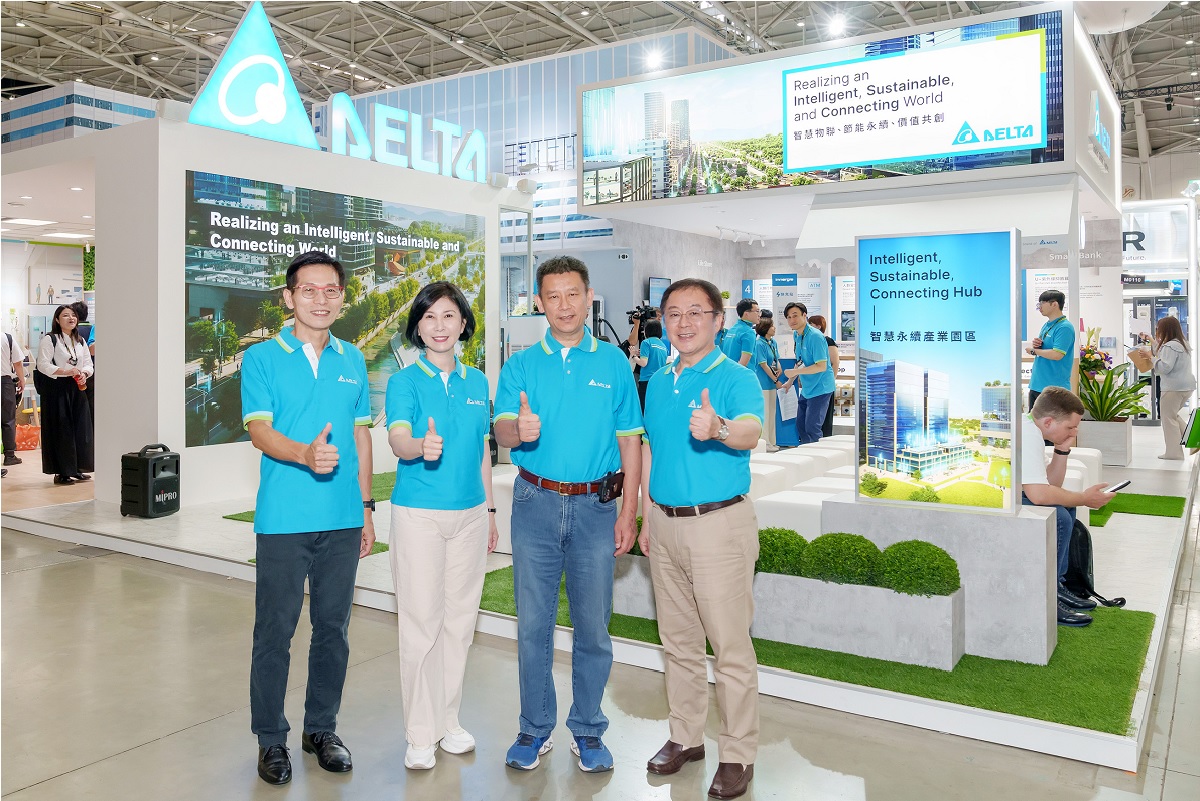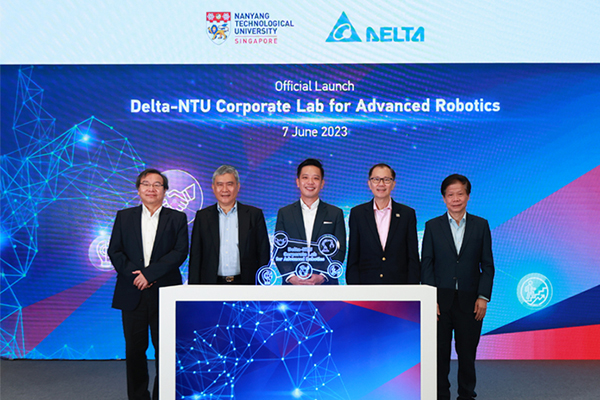Post pandemic, with the lifting of indoor mask mandate, the new notion of improving indoor air products to prevent pandemic proactively by reducing the probability of indoor disease transmission and protecting people's health has become a mainstream trend. Delta took the initiative to actively improve indoor air quality and has become one of the first certified workplaces.
The Sunshine International Conference Hall and Exhibition Center at Delta headquarter was conferred the Indoor Air Quality Gold Certification by the Department of Environmental Protection of Taipei City Government, and Commissioner Sheng-Chung Wu personally visited Delta to award the certificate. The certification requires passing indoor air quality testing for carbon dioxide and bacterial concentrations. Delta introduced its own products such as U+UV antibacterial devices, UNOnext indoor air quality detectors, along with Energy Recovery Ventilators in its headquarters to maintain indoor air quality under the premise of low energy consumption over sustained periods. Tests revealed a carbon dioxide concentration below 800ppm and a bacterial concentration value below 500CFU/m³ and Delta was awarded the highest gold level certification for indoor air quality certification by the Taipei Department of Environmental Protection.

In Delta headquarters, there are multi-functional UNOnext indoor air quality detectors installed, which can automatically activate the Energy Recovery Ventilator (ERV) to filter and introduce fresh air, ensuring excellent indoor air quality.
With an eye toward protecting the health of employees, Delta headquarters is ubiquitously dotted with its own health building solutions, and it also obtained the "WELL Health - Safety Assessment" certification during the pandemic in 2022. The all-in-one UNOnext indoor air quality detectors, installed in all areas of the office, automatically activate the Energy Recovery Ventilator (ERV) filtration and introduce fresh air when poor air quality is detected, maintaining good indoor air quality while keeping energy consumption low. The U+bacteriostatic devices are installed in areas, such as tea rooms and washrooms, which are prone to pollution, as well as enclosed and crowded areas, such as elevators and exhibition areas. The 222nm wavelength ultraviolet rays used will not penetrate the stratum corneum of the human body and can coexist with people. Experiments conducted overseas have proved that one hour of irradiation can achieve the same bacteriostatic effect as 33-66 times of space ventilation (note), effectively reducing the indoor bacterial concentration.
Note: Data source - Eadie, E., Hiwar, W., Fletcher, L. et al. Far-UVC (222 nm) efficiently inactivates an airborne pathogen in a room-sized chamber. Sci Rep 12, 4373 (2022); The CDC recommends 6-12 ventilations per hour to achieve the effect of pandemic prevention.















